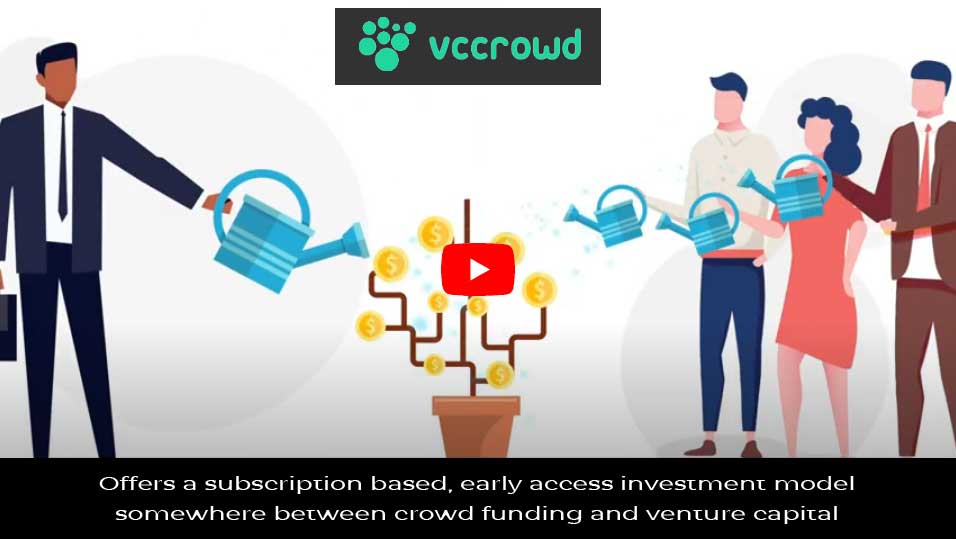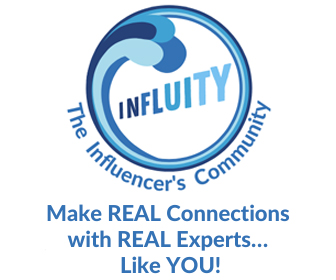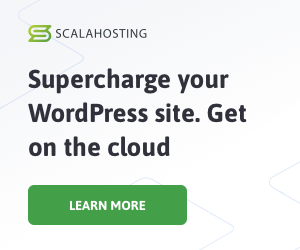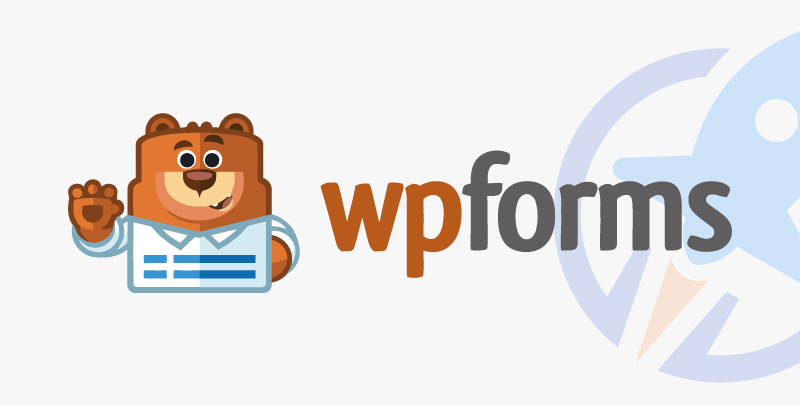What would happen if you put employees first?
I’ve been in marketing for almost 40 years. So, it wouldn’t surprise you if I said the customer should be at the center of your business. After all, customers pay our bills and our salaries—so yeah, customers matter.
But over the years, I’ve noticed something weird and I have no idea why this is because it makes no logical sense.
Most small business owners put 90% of their sales and marketing focus on getting customers. But getting customers is expensive. Marketing is expensive. The cost of acquiring a new lead is anywhere from $18 to $28! That’s a lot.
At the same time, everyone KNOWS that loyal customers are the most profitable customers. And yet, business owners aren’t as excited about these types of marketing strategies even though they cost much less and require far less marketing effort. Go figure, I don’t get it.
Employees are an IGNORED Marketing Asset
So, let’s talk about a hidden, ignored and underutilized marketing resource—your employees.
Think about it. Your employees are literally responsible for everything that creates your product or service, delivers your product or service, maintains your product or service, etc. Without employees (unless you’re a solopreneur), you have no business.
Now, we’ve all been to businesses that say, “Employees are our greatest asset.” Oddly enough, those who say it most often show it the least. Instead, they complain about employees not caring, not working, not putting in the effort.
In the end, this type of attitude is hurting your profitability.
Customers Evaluate Companies Based on How They Treat Employees
Since 2015, JUST Capital, a non profit organization has surveyed nearly 200,000 Americans to find out what they call “The People’s Priorities”. The results of this annual survey are designed to provide a roadmap for companies to focus on and track.
“Year after year, Americans say that companies should put workers squarely at the heart of their business practices, foremost by paying their workers a fair and living wage. Indeed, Worker Issues continue to command the highest share of priority (42%) among the 20 stakeholder-related issues we measure, with four of the five Worker Issues once again among the top six priorities of the public, with Workforce Advancement gaining in importance this year.“ – JUST Capital
For several years now, Americans have been very focused on worker issues and rewarding those companies who treat workers fairly with their business.
In short, if shareholder value is important to you, then sales and profits are important. If sales and profits are important, then investing in customer engagement is important. And if customer engagement is important (because it leads to increased profits), employee engagement is important (because it leads to profits). And, if employee engagement is important, you’ll want to attract the best, brightest and most talented employees. And, if you want that, you’re going to have to create an environment for them to want to work in.
People matter. How you treat people matters. And the infrastructure and company culture you create matters if you want to make money.
Flipping the Script: Your Business is the Product, Employees are Your Customers
If you’re committed to doing less marketing, less outbound selling and becoming the obvious choice for your customer, you’re going to have to zig while others are zagging.
So, what if you were to flip the script a little bit.
What if your business was the product and your employee was the customer? Why would they choose you? Why would they stay with you? Why would they go the extra mile for you?
This article is about flipping the script on your marketing. It’s about leveraging the logic equation you know is true: happy employees = loyal customers = more money and LESS marketing effort.
Let’s talk about the power of putting people first and how focusing on employee engagement can be your best-kept marketing secret.
Wait. I know what you’re thinking.
How Will Putting My Employees First Make Me Money?
Let’s go through the thought process step by step:
- Customers trade money for products or services that fulfill a desired outcome
- Customers decide whether to purchase from you based on their experience with you.
- Customer experience is created by employees (they make the product, they deliver the product, they service the product, they take customer complaints, they solve customer problems. You provide the capital, employees provide labor. )
- Disengaged, unhappy employees aren’t engaged in their labor and create poor customer experiences.
- Poor customer experiences means customers will purchase from someone else.
- You have to spend more money on sales and marketing getting new customers.
- Unhappy employees leave. You have higher turnover and pay more for new employees.
We’ve all had this experience both as customers and business owners.
And our friends at the Gallup Organization have measured this experience. They call it employee engagement and here’s how it works.
Engaged Employees = Engaged Customers = Happy Wallets
Gallup began measuring employee engagement in the 1990‘s with their Q12 survey. They wanted to know what impact having engaged employees had on the bottom line. They came up with 12 questions that reflected how engaged employees were in their work and what impact their answers to these questions had on the overall profitability of the company.
The highlighted questions are elements you can manage with a HCM platform like isolved.
Gallup found a 23% difference in profitability between top-quartile and bottom-quartile business units in terms of employee engagement, with highly engaged business units achieving a 10% increase in customer ratings and a 23% increase in sales.
In short, happy employees equals happy and engaged customers. And this results in 21% more money to your bottom line.
Then in the early 2000s Gallup launched their customer engagement metric. As expected, they found that the more engaged your customers, the more profitable the business. How much more 23%! So the same increase in profitability for both employee engagement and customer engagement.
But it’s not just Gallup who has these kinds of impressive stats. When isolved did their “Voice of the Workforce” study they found that 90% of employees saying the experience they receive at work impacts the experience they deliver to customers – and 89 percent of HR leaders agree with this assessment.
So, putting people first, isn’t just good for people, it’s good for customers, and it’s good for your bottom line.
Embracing an employee first culture not only enhances employee well-being and engagement but also drives profitability by creating a supportive and inclusive environment that attracts top talent and reduces turnover.
Creating a People First Company Culture is Easier Than You Think
Now we know that happy and engaged employees generate profits. But how do employees really feel? isolved, a leading Human Capital Management Software (HCM) has conducted an HR Trend Report for 2024, and an HR Leader Champions of Change Report where they surveyed both employees and leadership to get a deeper understanding of what employees want and how leadership is delivering on employee experiences.
Embrace Your Employee’s Desire for Fulfillment
Remember that old saying “They wouldn’t call it work if it were supposed to be fun”? Well, those days are gone.
The isolved 2024 Trend Report shows that year over year employees are craving personal fulfillment.
They don’t go into detail about what “personally fulfilling” means. But, given that we’re talking about building a people first company culture as a marketing strategy, let’s say that personally fulfilling means feeling like their skills and talents are being used and appreciated.
This is an exciting trend because it says that employees are begging to be a more integral part of your business. There is all this pent up employee energy just waiting to be leveraged for the success of your business.
Focus on the Basics of Employees Want
If your employees can’t meet their basic needs, they aren’t going to meet your customer’s needs.
The isolved 2024 Trends Report shows that 64% of surveyed employees chose wanting a higher salary as a key factor of dissatisfaction with their current job.
As business owners, you’re looking to save money wherever you can. So if you’re skimping on salaries, you’re losing money on the customer experience, acquisition, and retention side of the business.
Both you and your employees are looking for value, and neither one is getting it. I don’t know when we decided that skimping on employees means less profits. It’s just not true.
Look at Dan Price.
Price was laughed at in the business and entrepreneur world when he decided to cut his million dollar salary and set the minimum salary to $70,000 in 2015. This happened after a transformative walk in the woods with a friend who was struggling to make ends meet at $50,000.
Everyone predicted that he’d fail. Instead, the opposite happened. In a recent LinkedIn post he shared that his company has continued to grow.
That’s just one example. Each year, Gallup gives Exceptional Workplace Awards. And the performance differences between companies with the highest employee engagement and the lowest employee engagement are huge.
High employee engagement companies had:
81% less absenteeism
58% fewer safety incidents
18% less turnover for high-turnover organizations and 43% less turnover for low-turnover organizations
28% less shrinkage (theft)
64% fewer safety incidents (accidents)
41% fewer quality (defects)
10% more customer loyalty/engagement
18% more productivity (sales)
23% more profitability
I encourage you to take the time to do this math for your own business. How much money would you save, would you earn if you applied these percentages to your own business?
Work With Employee Expectations Instead of Against Them
isolved also asked leaders and business owners if they felt that employees’ expectations were out of control. 76% of surveyed leaders said “No”. This is great news because it says that today’s small business leadership is open to leveraging employees’ talents.
Even when you look at leaders’ reasons for saying “No, employee’s expectations for the experience they have at work are NOT out of control”, you can see that leaders are ready to embrace a people first culture. Both employees and leaders are on the same page.
How a Small Restaurant Shifted to People First and Won Big
It’s uncommon for a small business to see an employee issue as a marketing issue. But as I’ve mentioned before, if you focus on improving your employees’ experience, you’ll see improvements across your entire business.
That’s what happened with JumBurrito, a local restaurant in Midland, Texas. Founded in 1979 by Jose and Diane Cuevas, today they have 6 restaurants and a factory.
From the beginning, Jose and Diane really cared about their employees, but they had high turnover as larger chains were wooing their employees away with higher salaries. Sure, the easy solution would have been to just raise salaries, but JumBurrito’s philosophy was to invest in the whole person. And that means so much more than salaries.
The idea was always to compete with other businesses for the best employees by simply offering the best employee experience. So here are just a few things that they did:
- Focused on automating basic HR tasks that consume HR’s time and keep them from working on bigger things.
- Automated employee’s 401K investing and switched from online to paper statements so that people could see how much they were saving.
- Used isolved’s AI features to manage interviews and scheduling.
I’m only scratching the surface here. The real lesson is that by simply putting more focus on the employee experience, automating the simple tasks with an HCM software and improving one area at a time, you will start seeing immediate results.
How to Build Competitive Advantage With Your Employees
If you’re ready to take the first step in turning your amazing employees into a real competitive advantage, you can use this marketing process and simply aim it at your employees; so your business is the product and your employees are your customers.
Let’s take it step by step:
Research: Look for opportunities and unmet needs in the marketplace
Your goal in this step is to see what other employers are offering and see what’s missing that you can provide employees. You can use the isolved trends and leaders report to guide your research.
Ideal Customer: Find and profile the attributes you’re looking for in an employee
In the same way that you have ideal customers, you have ideal employees. You may describe them in terms of demographics. But you will most likely be looking for certain character traits, attitudes, and ways of being.
Offer: What you offer to your ideal customer that delivers a desired outcome
This is where things get exciting. Using the information you learned from your research, and from the isolved reports I shared, you can create a unique mix of benefits and support that you offer your employees that will give them the control and fulfillment they want and engagement you and your customers need.
Implementation: Choose your strategies, tactics, and tools.
Once you’ve set your people-first strategy and laid out your benefits, you’re ready to implement and manage what you’ve created. In the same way that you use marketing software to help you manage your campaigns, or CRM software to manage your customers, you will want to use HCM (human capital management) software to help you implement and manage all your employee activities such as onboarding, payroll, training, scheduling, time management and more.
Optimization: Set your baselines and improve your results
And the last step is measurement and optimization. In this step you’ll be tracking your results as well as measuring employee engagement and feedback and then funneling those results back into your research for ongoing improvement.
By treating your employees as your most valuable customers you can create a workplace culture that attracts top talent and drives amazing results. Remember it’s simple: research, profile, offer, implement, optimize. Each step builds on the last creating a cycle of continuous improvement and engagement.
Companies You Know and Love – Because They Put People First
Some companies really get it when it comes to putting employees first. They’ve figured out how to create an environment where employees thrive and in return they get loyalty and productivity. Here are a few of the companies that put their employees first and get the benefits.
Southwest Airlines: Happy Employees Fly High
Southwest Airlines is famous for their employee first culture. Their bootstrapped cost-saving history has always depended on their employees going the extra mile. Even though they’ve grown into a much larger and more established company since their founding in the 60’s, they’ve retained their focus on employees and transparent communication.
So, while it’s no surprise that they are using an HCM software to manage all of their HR, I wanted to mention that they rely on the communications feature of that software to make sure that their employees stay in the loop on what’s happening at the highest levels and vice versa.
Google: Innovating Through Employee First Policies
Google is the epitome of innovation and a lot of that can be attributed to their employee-first policies. From benefits to career development opportunities to a supportive work environment Google goes above and beyond to keep their employees happy and engaged.
Google uses advanced HCM systems to manage their benefits programs, performance reviews and professional development initiatives. This keeps employee engagement and innovation high.
Costco: Value Through Employee Investment
Costco believes that taking care of employees leads to better customer service and they practice what they preach. They offer competitive wages, great benefits and career advancement opportunities so their team members are motivated and engaged.
Costco uses HCM software to streamline HR processes, manage employee benefits and training programs. This well oiled machine means employees are well supported and motivated and that means better customer experiences.
Patagonia: Work and Life Balance for a Better World
Patagonia is famous for taking care of their employees and work-life balance. They offer flexible schedules, on-site childcare and even encourage employees to get involved in environmental activism. This holistic approach means employee loyalty and it aligns with their values.
Patagonia uses HCM systems to manage flexible work arrangements, track employee engagement and support professional development. That means a motivated and loyal workforce that’s making a positive impact on the world.
Salesforce: Happiness and Success
Salesforce puts a lot of emphasis on employee satisfaction with wellness programs, continuous learning opportunities and a supportive culture. That means highly engaged and productive employees.
Salesforce uses their own HCM solutions to manage employee engagement, track performance and provide personalized development plans. That means employees are deeply connected to the company’s mission and values and success comes from within.
These popular brands prove that putting employees first isn’t just good for feelings – it’s good for business.
By investing in their people and using HCM software, like isolved to streamline and support HR they create environments where employees are engaged, productive and loyal.
Whether you’re a small business or a global enterprise these examples show that prioritizing your team means extraordinary results. Now get in the game and make your employees your most valuable asset.
How to Shift to a People First Business
I know this is a lot to take in. After all, when you think about doing marketing to attract more customers, you probably don’t think about the powerful role your employees play in this process.
To move your business to an employee-first model follow these steps:
- Assess current company culture:
- Conduct employee surveys and feedback sessions
- Review existing policies and practices
- Identify areas for improvement
- Create an employee-first strategy:
- Define clear objectives and KPIs
- Create a roadmap
- Budget and resources
- Open up communication channels:
- Open door policy
- Regular town halls and feedback sessions
- Digital platforms for communication
- Review HR policies and practices:
- Review employee handbook
- Flexible work arrangements
- Benefits and compensation packages
- Invest in employee development:
- Personalized career growth plans
- Training and upskilling opportunities
- Mentorship programs
- Empower employees:
- Decision making at all levels
- Employee led initiatives and projects
- Recognition and rewards for ideas
- Work-life balance:
- Wellness programs and mental health support
- Paid time off
- Policies to prevent burnout
- Onboarding and integration:
- Comprehensive onboarding program
- Mentor to new hires
- Team bonding activities
- Fair and transparent performance management:
- Clear performance metrics
- Regular performance reviews
- Constructive feedback and support
- Recognition culture:
- Peer to peer recognition programs
- Individual and team recognition
- Monetary and non-monetary rewards
- Gather and act on feedback:
- Pulse surveys
- Suggestion boxes or digital feedback platforms
- Act on employee suggestions and communicate outcomes
- Align customer experience with employee experience:
- Train employees on customer satisfaction
- Empower employees to make customer centric decisions
- Recognize employees for great customer service
- Measure and analyze:
- KPIs for employee satisfaction and engagement
- Business performance metrics
- Adjust based on data and feedback
People First is an Extra Marketing Channel
I’m always talking about the best way to do less marketing and make more money, but I’ve been ignoring the power of your team and your employees.
When you look at the data over the decades, the power of an employee-first strategy is by far your best marketing value. It’s not only good for you, but it’s good for your employees and your customers.
An employee-first strategy is ideal if you’ve been avoiding sales because it feels “icky” or pushy. Your employees can be your best inside and outside sales team you never realized you had. They know your business, they know your products, and they know the inner workings and value of your products or services.
I know that it’s tempting to think that this is how it should be. And, I’d agree in principle. But your employees are NOT principles, they are value creators. And if you want them to create more of that value, you’ll have to make it easy on them, incentivise them, and
Here’s the thing. If you want to leverage the power of your employees, you’ll need to have an integrated, all-in-one system that helps them manage the basics of their existing job and make it easy to learn more about the business and refer and be rewarded for referring new customers and employees.
And this is where an HCM (Human Capital Management) software can help both you and your employees stop worrying about the details and start running and growing your best business.













